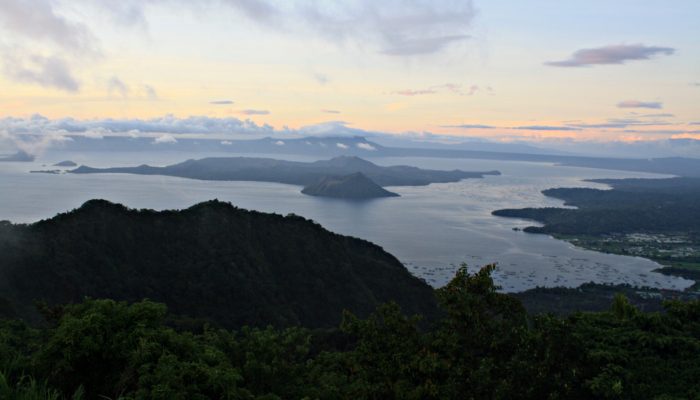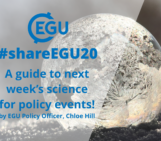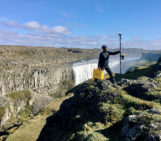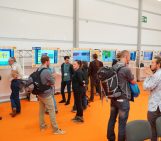
Asia is one of the most natural disaster-prone regions on the globe. Overpopulation and limited resources mean that natural hazards hit local populations particularly hard.
“It doesn’t matter which index or evaluation method you use, Asia will always unfortunately come out on top when it comes to fatalities and damage from natural hazard events,” explains Dr. Adam Switzer, a member of the conference’s Executive Organizing Committee.
To provide a global platform, which brings together participants from across the world and addresses the challenges which need to be unraveled, as well as the potential solutions, the Asia Oceania Geosciences Society (AOGS) and EGU have partner to host their very first joint meeting.
With Taal Volcano as the spectacular backdrop, students, early career and established scientists will gather in the Philippines from the 4th to 8th February 2018, to discuss current advances in knowledge and new perspectives relevant to natural hazards in the Asian region.
“We hope that this conference will be a fundamental new step to addressing some of the most pressing hazard problems in the region by bringing together some of the world’s top hazard practitioners in the physical, social and political sciences,” goes on to say Switzer.
The meeting will boast an innovative format, with the organisers actively sidestepping the tradition conference triple Ss: sections, sessions and silos. Instead, the programme is arranged in a series of themes which, through panels, discussion groups, networking and poster introductions, will explore seven overarching topics: from natural hazards in the megacity, to multi-hazard interactions, right through to the transient and long-term effects of catastrophic perturbations.
Niels Hovius, also of the conference’s Executive Organizing Committee, adds: “we strive for a programme that explores the connectivity between processes, cause and effect, a programme that acknowledges the fact that many natural disasters have an important time dynamic, lasting much longer than the initial impact.”
The conference abstract submission is currently open, so if your research falls within one of the conference themes, consider contributing to the meeting. But hurry! Abstract submission closes on 31st August 2017.
As well as discussing and sharing advances in natural hazards science, conference participants will get the opportunity to experience the impacts of natural hazards first hand.
The Philippines is, unfortunately, rich with natural hazards and as such provides a wealth of opportunity to investigate the physical, social and economic aspects of numerous natural hazards through a series of conference field trips.
“The recent earthquake in Bohol, the 1991 Pinatubo eruption and the devastation and recovery from 2013 Typhoon Haiyan are all part of the field program,” highlights Switzer.
Not only that, the conference takes place in a sought-after location, by tourists and locals alike. The Taal Vista Hotel is deeply rooted in the heritage of Tagaytay City. Overlooking Lake Taal, with views which stretch out over Taal volcano, it is also only a little over an hour away from the bustling city of Manila.
“There are a large range of very affordable to more luxurious accommodations available in Tagatay, although early booking is encouraged as the area is a popular one for tourism due to its environmental beauty,” points out Bruce Malamud, of the conference’s Executive Organizing Committee.
The AOGS-EGU conference is accessible and affordable for both early career and more senior researchers from around the globe. It hopes to bring together the international research community, with the scientific programme, as well as its spectacular setting, suited to natural hazard scholars and practitioners alike.
The Executive Organizing Committee also hopes that its appeal will transcend the geosciences and that the meeting’s themes will attract those dealing with other aspects of natural disasters: medics, planners, managers, educators and more.
“It is important that we have dialogues that reach beyond the confines of our disciplines,” says Hovius, “For me, this conference will be an opportunity to see some iconic sites, but also to make contacts with local researchers who may be interested in joining international projects targeting multi-hazards, transient response and anomalous events.”
Visit the conference website for all the meeting details. Among the website pages you’ll find information about the conference themes, abstract submission requirements and an overview of the meeting programme. Early bird registrations (until 23rd November 2017) receive a heavily discounted rate, as do AOGS and EGU members. Students also benefit from reduced registration fees.
The website is also packed with logistical information, from details about the conference venue, through to what you can expect to eat, see and do in Tagaytay City. You can also find out if you require a visa for travel to the Philippines and what to do if you are a national of a non-visa exempt country.
By Laura Roberts (EGU Communications Officer) in collaboration with the AOGS–EGU Joint Conference Executive Organizing Committee
For inquiries about the conference please contact Meeting Matters International (nathazards@meetmatt.net). Further contact information is available on the Joint Conference website. You can also receive updates about the conference on Facebook.




